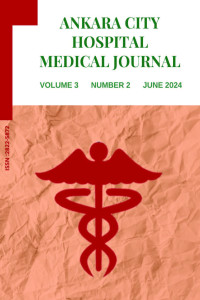Abstract
INTRODUCTION: The aim of our study is to evaluate the effect of humeral cortical index (CI) on proximal humerus fracture (PHF) risk in patients over 65 years.
METHODS: Patients over 65 years who had PHF due to injury being a fall from less than standing height and were treated surgically between January 2019 and December 2023 were included in group 1. Patients over 65 years who applied to the hospital and had a shoulder anterior-posterior radiography were included in group 2. Neer classification was used to classify PHF. CI measurements were performed for all patients.
RESULTS: In group 1, 54 male and 36 female patient were evaluated. In group 1, 42 right and 48 left humeral CI measurements were performed. The average age of group 1 was 72.87±6.65. In group 2, 49 male and 37 female patient were evaluated. The average age of group 2 was 70.9 ±4.79. No significant difference was determined between group 1 and group 2 for gender, age and side. (p=0.684, p=0.236, p=0.128 respectively). For group 1, the mean humeral CI was 0.304±0.06 and 0.380 ±0.07 for group 2. A significant difference was determined between group1 and group 2 for humeral CI. (p>0,001) No significant difference was determined between Neer type 2 patients and Neer type 3-4 patients for age, gender and humeral CI. (p=0.373, p=0.15, p=0.451 respectively) The risk of PHF increased 3.2 times in patients with humeral CI lower than 0.3267.
DISCUSSION AND CONCLUSION: Humeral CI is a good parameter in determining the risk of PHF in the population over 65 years. However, humeral CI does not affect the severity of PHF.
Details
| Primary Language | English |
|---|---|
| Subjects | Traditional, Complementary and Integrative Medicine (Other) |
| Journal Section | Research Articles |
| Authors | |
| Publication Date | June 28, 2024 |
| Submission Date | May 31, 2024 |
| Acceptance Date | June 25, 2024 |
| Published in Issue | Year 2024 Volume: 3 Issue: 2 |


